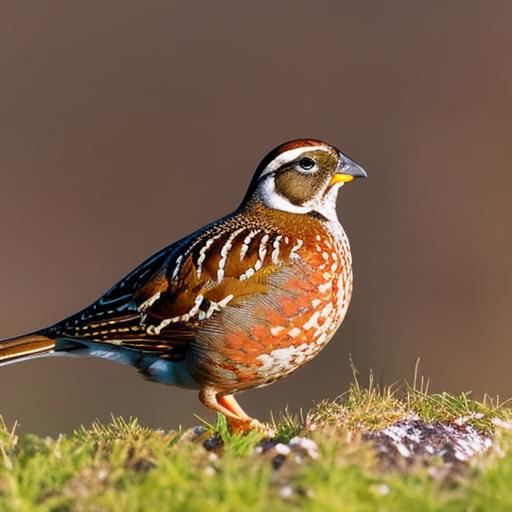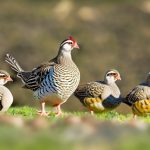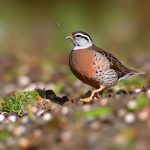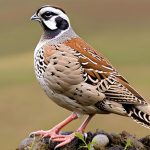Quail keeping is a rewarding and enjoyable hobby that has been gaining popularity in recent years. Quail are small, ground-dwelling birds that are relatively easy to care for and can be kept in a backyard or on a small farm. They are known for their delicious eggs and meat, as well as their charming personalities. Keeping quail can be a great way to connect with nature and provide a sustainable source of food for your family.
Quail come in a variety of species, each with its own unique characteristics and requirements. Whether you are interested in raising quail for their eggs, meat, or simply as pets, there is a species of quail that will suit your needs. In this article, we will explore the different aspects of keeping quail, from choosing the right species to setting up their enclosure, feeding and watering them, managing their health and diseases, breeding and raising quail chicks, and tips for successful quail keeping.
Key Takeaways
- Quail keeping is a rewarding hobby that can provide fresh eggs and meat for your family.
- Consider the purpose of keeping quail (eggs, meat, or pets) when choosing the right species for your needs.
- Setting up a quail enclosure requires attention to space, bedding, and protection from predators.
- Providing a balanced diet and clean water is essential for the health and well-being of your quail.
- Regular monitoring and proper hygiene practices are key to preventing and managing diseases in quail.
Choosing the Right Quail Species for Your Needs
When it comes to choosing the right quail species for your needs, there are several factors to consider. Some of the most popular quail species for keeping include the Coturnix quail, Bobwhite quail, and California quail. Each species has its own unique characteristics and requirements, so it’s important to do your research before making a decision.
Coturnix quail, also known as Japanese quail, are one of the most popular species for keeping due to their high egg production and relatively docile nature. They are also known for their fast growth rate, making them a popular choice for those interested in raising quail for meat. Bobwhite quail, on the other hand, are known for their beautiful plumage and distinctive call. They are popular for hunting and as pets due to their charming personalities. California quail are native to the western United States and are known for their striking appearance and sociable nature.
When choosing a quail species, it’s important to consider your specific needs and goals. If you are primarily interested in egg production, Coturnix quail may be the best choice for you. If you are interested in raising quail for meat or hunting, Bobwhite quail may be a better fit. Consider the space you have available, as well as any local regulations or restrictions on keeping quail, before making your decision.
Setting Up the Quail Enclosure
Setting up a suitable enclosure is essential for the health and well-being of your quail. Quail are ground-dwelling birds that require plenty of space to move around and forage. When setting up their enclosure, it’s important to provide them with a secure and predator-proof space that includes shelter, food and water sources, and areas for dust bathing.
The size of the enclosure will depend on the number of quail you plan to keep. As a general rule of thumb, each quail should have at least 1 square foot of space in the enclosure. This means that if you plan to keep 10 quail, you will need an enclosure that is at least 10 square feet in size. The enclosure should be securely fenced to prevent predators from gaining access, and it should also have a roof to protect the quail from aerial predators.
In addition to providing shelter and security, the enclosure should also include areas for the quail to dust bathe. Dust bathing is an important behavior for quail that helps them keep their feathers clean and free from parasites. You can provide a dust bathing area by filling a shallow container with sand or fine dirt and placing it in the enclosure. It’s also important to provide plenty of hiding spots and perches for the quail to roost on.
Feeding and Watering Your Quail
Feeding and watering your quail is an important aspect of their care that requires attention to detail. Quail have specific dietary requirements that must be met in order for them to thrive. A balanced diet for quail should include a high-quality commercial feed that is specifically formulated for game birds, as well as access to fresh water at all times.
Commercial quail feed is available in most pet stores and agricultural supply stores and is formulated to provide the essential nutrients that quail need to stay healthy. In addition to commercial feed, you can also supplement your quail’s diet with fresh fruits and vegetables, as well as mealworms or other insects. It’s important to monitor your quail’s food intake and adjust their diet as needed based on their activity level and overall health.
In addition to providing a balanced diet, it’s important to ensure that your quail have access to clean, fresh water at all times. Quail can be picky drinkers, so it’s important to provide them with water in a way that is easily accessible to them. This can be done by using shallow water dishes or nipple waterers that are specifically designed for quail. It’s important to check the water supply regularly and clean the water dishes or waterers to prevent the growth of bacteria or algae.
Health and Disease Management
Maintaining the health of your quail is essential for their overall well-being and productivity. Like all animals, quail are susceptible to a variety of diseases and health issues that can impact their quality of life. It’s important to be proactive about managing their health by providing a clean environment, a balanced diet, and regular health checks.
One of the most common health issues that can affect quail is respiratory infections. These infections can be caused by poor ventilation, high humidity, or exposure to drafts. To prevent respiratory infections, it’s important to provide your quail with a well-ventilated enclosure that is free from drafts and excessive moisture. It’s also important to keep their bedding clean and dry, as damp bedding can contribute to respiratory issues.
In addition to respiratory infections, quail are also susceptible to parasites such as mites and lice. These parasites can cause irritation and discomfort for your quail, so it’s important to monitor them regularly for signs of infestation. You can prevent parasite infestations by providing your quail with regular dust bathing areas and by keeping their enclosure clean and free from debris.
Regular health checks are also an important part of managing your quail’s health. This includes monitoring their behavior and activity level, as well as checking for any signs of illness or injury. If you notice any changes in your quail’s behavior or appearance, it’s important to seek veterinary care as soon as possible.
Breeding and Raising Quail Chicks
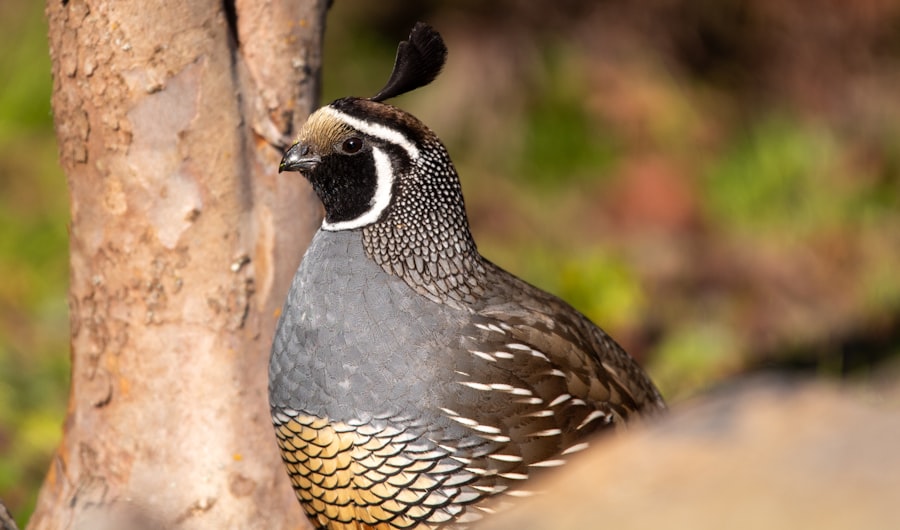
Breeding and raising quail chicks can be a rewarding experience that allows you to expand your flock and potentially increase your egg or meat production. Quail are prolific breeders that reach sexual maturity at around 6-8 weeks of age, making them relatively easy to breed in captivity. However, there are several factors to consider when breeding and raising quail chicks to ensure their success.
When breeding quail, it’s important to provide them with a suitable nesting area that is quiet and secure. Quail will lay their eggs in secluded areas on the ground, so it’s important to provide them with nesting boxes or shelters where they can lay their eggs undisturbed. Once the eggs are laid, they should be collected daily and placed in an incubator or under a broody hen if you are using natural incubation methods.
Incubating quail eggs requires careful attention to temperature and humidity levels in order to ensure successful hatching. Quail eggs typically take around 17-18 days to hatch, so it’s important to monitor the incubator closely during this time. Once the chicks hatch, they should be provided with a warm brooder area that includes a heat source such as a heat lamp or heating pad.
Raising quail chicks requires providing them with a balanced diet that is high in protein to support their rapid growth. Commercial chick starter feed is available at most pet stores and agricultural supply stores and is specifically formulated to meet the nutritional needs of young quail. It’s important to monitor the chicks closely during this time and provide them with plenty of space to move around and exercise.
Tips for Successful Quail Keeping
Successfully keeping quail requires attention to detail and a commitment to providing them with the care they need to thrive. Here are some tips for successful quail keeping:
– Provide a secure enclosure: Quail are vulnerable to predators such as cats, dogs, raccoons, and birds of prey, so it’s important to provide them with a secure enclosure that is fenced and has a roof.
– Monitor their diet: Quail have specific dietary requirements that must be met in order for them to stay healthy and productive. It’s important to provide them with a balanced diet that includes commercial feed as well as fresh fruits and vegetables.
– Keep their environment clean: A clean environment is essential for the health of your quail. This includes regularly cleaning their enclosure, providing fresh bedding, and ensuring that their food and water dishes are clean.
– Monitor their health: Regular health checks are an important part of managing your quail’s health. This includes monitoring their behavior and activity level, as well as checking for any signs of illness or injury.
– Provide enrichment: Quail are active birds that require plenty of space to move around and exercise. It’s important to provide them with enrichment such as dust bathing areas, hiding spots, perches, and toys.
In conclusion, keeping quail can be a rewarding and enjoyable hobby that provides you with fresh eggs or meat while allowing you to connect with nature. By choosing the right species for your needs, setting up a suitable enclosure, providing them with a balanced diet and clean environment, managing their health and diseases, breeding and raising quail chicks, and following these tips for successful quail keeping, you can ensure that your quail thrive in your care.
If you’re interested in learning more about keeping quail, you might also find our article on “What Vegetables Do Quails Eat?” helpful. Understanding the dietary needs of your quail is essential for their health and well-being. For tips on creating a suitable environment for your quail, check out our guide on “Where to Put Chicken Coop.” And if you’re considering a garden coop setup, our article on “Garden Chicken Coop” provides valuable insights into integrating chickens into your garden space. For more information, visit Poultry Wizard.
FAQs
What are quail?
Quail are small ground-dwelling birds that are commonly kept for their eggs and meat. They are known for their fast growth and high egg production.
What do quail eat?
Quail are omnivorous and eat a variety of foods including seeds, insects, and small plants. In captivity, they can be fed a commercial quail feed as well as fresh greens and insects.
How do you keep quail?
Quail can be kept in a variety of housing setups including cages, aviaries, or coops. They require protection from predators and access to clean water and food.
How do you care for quail eggs?
Quail eggs should be collected daily and stored in a cool, dry place. They can be used in the same way as chicken eggs and are known for their rich flavor.
What are the benefits of keeping quail?
Keeping quail can provide a sustainable source of eggs and meat. They are also relatively low maintenance and can be kept in smaller spaces compared to other poultry.
Meet Walter, the feathered-friend fanatic of Florida! Nestled in the sunshine state, Walter struts through life with his feathered companions, clucking his way to happiness. With a coop that’s fancier than a five-star hotel, he’s the Don Juan of the chicken world. When he’s not teaching his hens to do the cha-cha, you’ll find him in a heated debate with his prized rooster, Sir Clucks-a-Lot. Walter’s poultry passion is no yolk; he’s the sunny-side-up guy you never knew you needed in your flock of friends!

